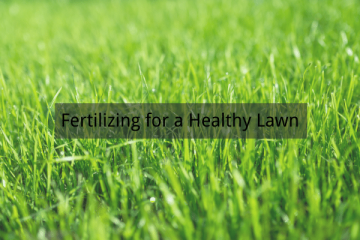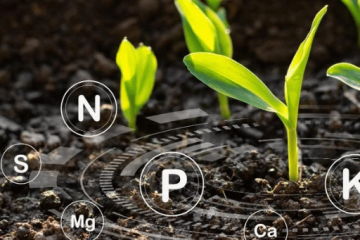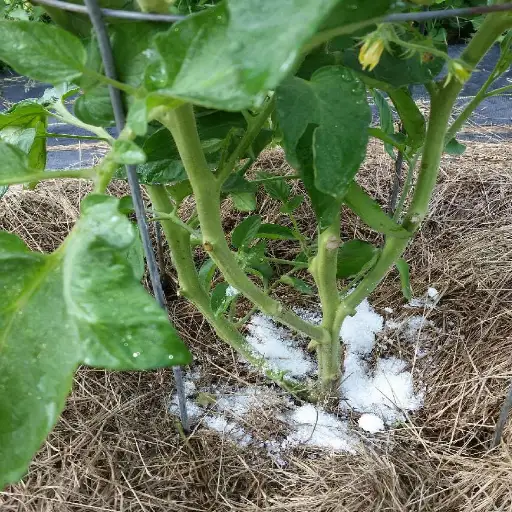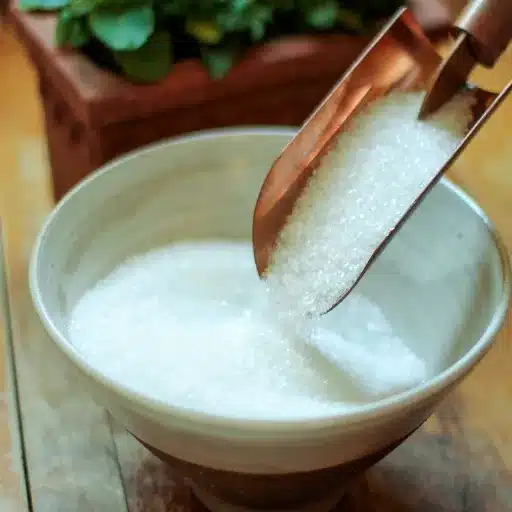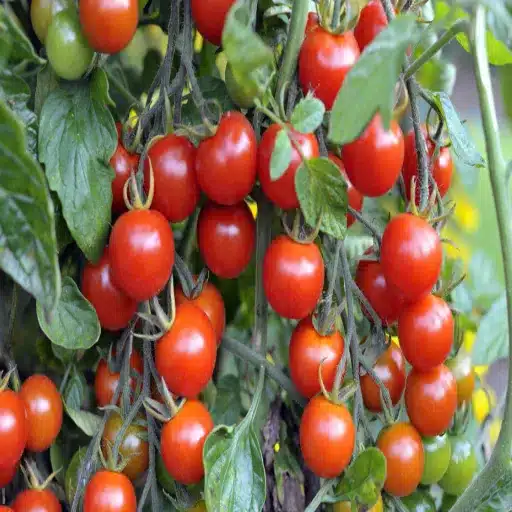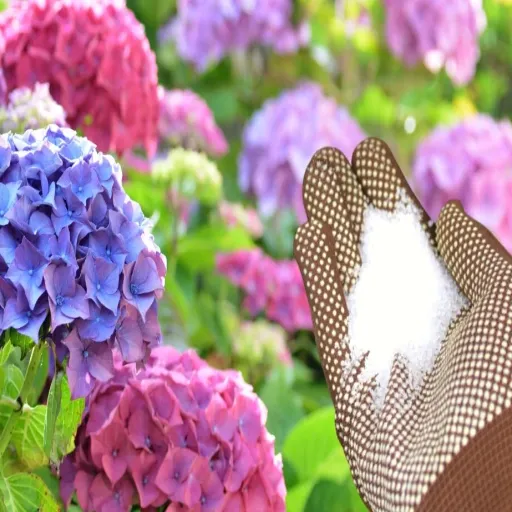Gardening enthusiasts and professionals alike are constantly seeking cost-effective, sustainable solutions to enhance plant health and boost yields. One such solution is Epsom salt—a naturally occurring mineral compound of magnesium and sulfate that has gained considerable attention for its potential gardening benefits. This guide is designed to provide a comprehensive understanding of how Epsom salt can be leveraged as a powerful tool in plant care. From its chemical composition to the ways it impacts plant growth, we’ll explore its applications, dosage recommendations, and the science behind its effectiveness. Whether you’re aiming to revive struggling foliage, enhance flowering, or simply nurture a thriving garden, this resource will equip you with the knowledge to harness the full potential of Epsom salt.
How Much Epsom Salt Should You Use on Different Plants?
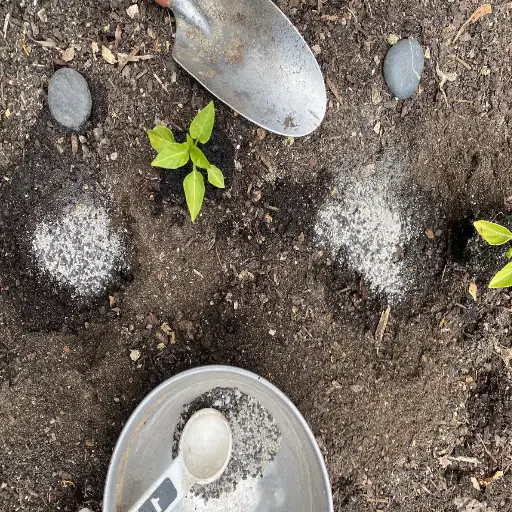
The Ideal Ratio: One Tablespoon of Epsom Salt Per Gallon of Water
When adding Epsom salt to a plant, the prescribed guideline of a tablespoon per one gallon of water is advised for scientifically backed reasons. This concentration enhances the greater magnesium to sulfur ratio which aids in chlorophyll production as well as promote photosynthesize which improves the intake of macro nutrients like nitrogen and phosphorus.
- Magnesium Content (MgSO₄·7H₂O): About 9.8% of magnesium, an integral component of plants, is essential for magnesium and enzymatic processes.
- Sulfur Content: Sulfur, around 13%, is vital in anabolism and protein formation of amino acids.
- Dosage Justification: A tablespoon, which is approximately 15 grams spread in one gallon of water, provides a safe nontoxic application allotment for almost all plants without the threat of nutrient overdose.
Soil drenches or foliar spray help provide this solution. Great care should be taken as the solution needs to be evenly distributed throughout the plant so all parts can benefit. Be prudent with the specific features of your plant species and soil conditions when making repeated applications.
Dry Application Methods: How to Sprinkle Epsom Salt Around the Base of Plants
Epsom salt can be used for dry applications, and to do this accurately, I use these efficiency steps. To start, I get an appropriate measure of Epsom salt, usually between one and two tablespoons per square foot of soil. In the case of larger plants like some shrubs, I proportionally increase the dosage by almost one half cup per plant. Thereafter, I place eespon salt around the base of the plant, voiding stems and leaves so I do not damage them. Finally, I lightly water the area so I can help the areas do sso and further ensure that no stems or leaves of the plants are obstructed so no damage is caused. Once planted, magnesium and sulphuressentials are taken in by the roots.
- Accuracy measures: Cover the salt and plant to assist so the pH could be interferred with disruption.
- When to apply: At signals when the plants nutrientsare soaked in, usually beginning of spring, and the end of autumn.
- How often: For the majority of plants, I would do once a month, though there would be changes done based on what the specific deets check s how tells set out so.
This is how bests layer the plant while at the same time are adjusting helping the overall balance soil nutrition.
Frequency of Application Throughout the Growing Season
During the growing season, I adjust the application rate according to nutrient plant requirements and ongoing soil health checks. For general applications, I utilize nutrient and soil amendments such as Epsom salt monthly to ensure there is sufficient magnesium and sulfur for plant use. If soil tests reveal deficiencies, I may expand the application frequency slightly, but I avoid applying too much to shield against unbalanced nutrient concentrations or negative impacts on soil pH.
- Absorption Rate of Nutrient: It is observed that plants actively growing during spring and summer months absorb nutrients more efficiently.
- Requirement for Magnesium: If plants deficient in magnesium exhibit some symptoms like older leaves turning yellow, then adding some additional may be ok. However, laboratory soil evidence will dictate the proper alterations.
- Impact of pH: Soil pH values of between 6.0 and 7.5 are ideal for applicable nutrient availability, and I have to be sure that the amendments I apply do not disrupt this pH balance, therefore, I test often.
This methodical approach guarantees that nutrient intervention is done during the appropriate timeframe in the plant’s developmental cycle while preserving soil quality.
What’s the Best Way to Apply Epsom Salt to Garden Plants?
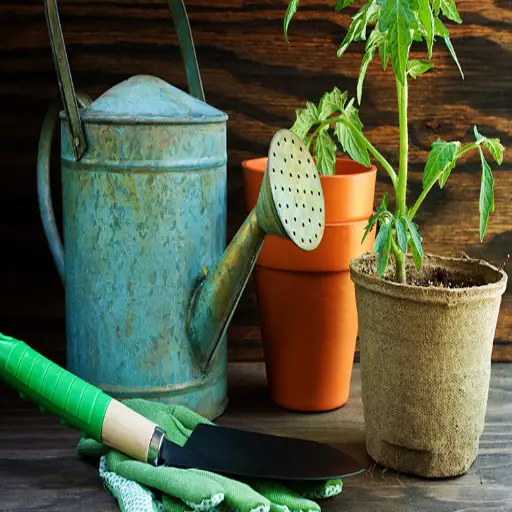
Foliar Spray Applications Using a Hose or Sprayer
To use Epsom salt in a hose or sprayer application, it is advisable to mix 15 grams (1 tablespoon) of Epsom salt in 3.8 liters (1 gal) of water. Mix thoroughly to avoid clogging hoses. When spraying, make sure to cover the foliage with emphasis on the underside of the leaves as that is the area with the most nutrient absorption efficiency.
- Solution Epsom Salt Concentration: 1 tablespoon per gallon achieved an effective Epsom Salt solution without the risk of damaging plant tissues with salt.
- Water Volume Required: Adequate water is necessary for even distribution across foliage and for absorption to take place.
- Application Timing: Early morning and late afternoon times minimize evaporation and aide in prevention of leaf burn due to sun when the leaves have a coating on them.
- Frequency: Based on plant health and soil nutrient charge, every 2-4 weeks is ideal for refraining from over application.
- Sprayer Calibration: Make sure to test it to avert uneven output coverage that can result in waste.
Following these guidelines will allow for optimal benefits from Epsom salt application while reducing negative impacts on soil quality and overall plant health.
Soil Drenching Methods for Potted Plants and Garden Beds
Like any other drenching method, soil drenching has to be prepared for in advance and applied correctly to maximize effectiveness. When setting out to apply Epsom salt to potted plants, first, the salt has to be appropriately diluted; two tablespoons per gallon of water is a good starting point. After thoroughly stirring the water, the solution can then be applied to the base of the plant. Care has to be taken so the drainage holes are not too clogged to ensure proper drainage of unused solution.
When treating garden beds, the initial task involves figuring out the total area that will require treatment and proportioning the Epsom salt solution accordingly. It is a good rule of thumb to use one gallon of solution for every twelve square feet of area although that number may be higher or lower depending on the composition of the soil and number of plants. Care should also be taken to evenly distribute the solution making use of a watering can or a hose-end sprayer with calibrated settings.
Regardless of the specific method, both moistened and dry soil have to be accounted for before treatment. If treated too dry, absorption may be an issue. Soil tests also need to be done periodically to account for nutrient levels so treating over and under can be avoided. Following these guidelines ensures soil health and ideal nutrient uptake simultaneously.
When Should You NOT Use Epsom Salt on Plants?
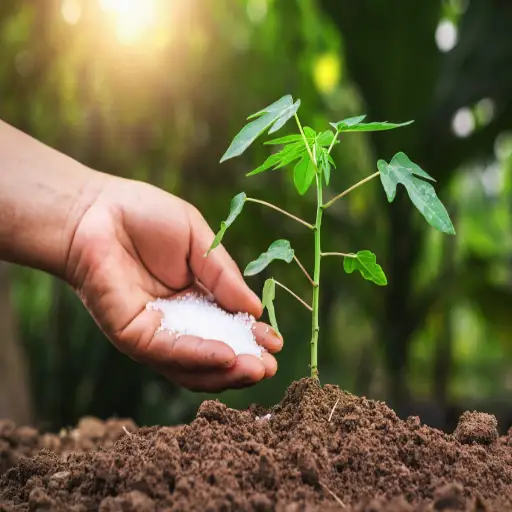
Signs Your Plants Don’t Need Magnesium and Sulfur
Plants may not require extra magnesium and sulfur because their current soil conditions or fertilizers may be sufficient for meeting the necessary nutrient requirements. The following signs substantiate this claim:
- Healthy Foliage and Growth: If plants show vigorous stems and fully green leaves without yellowing roots, magnesium deficiency may not be an issue.
- Nutrition Analysis Showing Adequacy: My analysis indicating soil sulfur and magnesium levels also provides all necessary verification information. Mostly, magnesium levels between 30 to 50 ppm are sufficient, and sulfur levels between 10 to 40 ppm are also adequate depending on crops.
- Proper Fertilizer Use: Balanced fertilizers incorporating Epsom salt may cause negative nutrient imbalances for those plants already receiving adequate minerals.
- No Visual Sulfur Deficiency Symptoms: If there is no yellowing of younger leaves, supplemental sulfur may not be required.
Taking into account these observations together with soil diagnostics will tell you if magnesium and sulfur additions to your plant care program are warranted or not.
How to Conduct a Soil Test Before Adding Epsom Salt
To evaluate whether the incorporation of Epsom salt is advantageous, I would first perform a thorough soil test. Here is how I would approach this task:
- Gathering soil samples: I would take soil samples from several locations within the planting site’s boundaries and vertically to a depth of 6-8 inches to capture the root zone.
- Determining magnesium and sulfur content: I would send the soil sample to a qualified soil testing laboratory and make sure that the analysis includes magnesium (Mg) and sulfur (S) tests. Magnesium levels in soil should, on average, be between 50-120 ppm, while sulfur levels may range between 10 to 20 ppm depending on the type of soil and crop needs.
- Measuring the pH: Since the soil pH has a profound impact on the nutrient availability, I would check whether the soil falls within the pH value optimal for the specific plants. Most plants, including crops, would do well in soil within the range of 6.0 to 7.0. however, if the pH is above or below this range, then other amendments might also be required along with Epsom salts.
- Collecting the data on Cation Exchange Capacity (CEC): The CEC of the soil gives an idea of the soil’s ability to retain and exchange nutrients and if it is high or low.
I would evaluate it against the specific nutritional requirements of the plant. In the case that magnesium or sulfur levels are sufficient to proportionate or high, I would refrain from Epsom salt application to avoid excessive nutrient dilution.
Potential Effects on Soil pH and Plant Nutrient Uptake
The use of Epsom salts (magnesium sulphate) is reported to have a neutral effect on soil pH because it does not significantly affect the concentration of hydrogen ions in the soil solution. Even so, it may change nutrient uptake through the proportions of magnesium and sulfur in the soil profile. In particular, excess magnesium may interfere with calcium and potassium absorption, leading to nutrient disorder deficiencies.
- Magnesium Content (Mg²⁺): Check the current amount of magnesium in the soil. Magnesium excess (>100 ppm for most crops) can lead to inhibition of potassium (K⁺) and calcium (Ca²⁺).
- Sulfur Availability (SO₄²⁻): Measure the sulfur levels and verify that they do not exceed optimal ranges (10-40 ppm for most soils) in order to avoid over-saturation.
- pH Range: Validate that the soil pH is ideally within the plant’s tolerable range (which is 5.5-7.5 for the majority of crops). Epsom salts are also pH neutral; however, over time, mineral imbalances could indirectly affect buffer capacity.
- Cation Exchange Capacity (CEC): Determine the soil CEC value to gain a comprehensive understanding of its retention and exchange capabilities of added magnesium and other cations without displacing vital nutrients.
The analysis of soil data will help avoid oversupply or deficient complications and serve to optimize plant health.
Can Epsom Salt Cure Common Plant Deficiencies and Problems?

Identifying Magnesium Deficiency Symptoms in Garden Plants
In garden plants, magnesium deficiency can often lead to interveinal chlorosis which is the yellowing of the leaf tissue, with the exception of the veins which remain green. This is most notable in older leaves, as magnesium is a mobile nutrient and is more available in older growth. Other symptoms include curling leaves, stunted height, and poor development of fruits.
- Leaf Tissue Analysis: Test the magnesium content with optimal values lying somewhere between 0.15% and 0.50%, depending on the species.
- Soil PH: Test that the magnesium bearing soil has the correct pH (6.0-7.0) as both strong acidity and alkalinity reduces magnesium availability.
- Cation Exchange Capacity (CEC): The CEC values provide an understanding of the potential magnesium retention the soil can provide and if nutrient balance exists or not.
With this information, I could conclude if Epsom salt (magnesium sulfate) could be used as a corrective to improve plant health without risking nutrient imbalance.
Using Epsom Salt to Address Yellowing Leaves and Poor Growth
Due to yellowing leaves and stunted growth, I looked into using Epsom salt as a magnesium supplement.
- pH Levels: To enable magnesium use, the soil pH has to sit between 6.0-7.0. If these margins are not met, adjustments have to be made prior to the use of Epsom salt. If the pH is too high or low, nutrients will not be absorbed no matter what supplementation is provided, and these limits need to be met before application.
- Magnesium Deficiency Symptoms: Particularly for older foliage yellowing leaves gap in between the veins or interveinal chlorosis is a tell tale sign of magnesium deficiency. Epsom salt will be of benefit to plants which show these symptoms.
- Application Rates: For sulfate accumulation and magnesium overload to be avoided, as a general rule, foliar spray of 1 tablespoon of Epsom salt per gallon of water or soil application of 1-2 tablespoons per square foot should suffice.
- Cation Exchange Capacity (CEC): For soils that are deficient in CEC, magnesium leaches away too quickly, leading to more frequent need for application. While soils with high CEC retain magnesium better, testing for retention is important to avoid excessive accumulation.
Checking the symptoms noted and CEC values against the soil pH level allowed me to safely conclude that Epsom Salt indeed serves to correct magnesium deficiencies’ negative effects on plant life while mitigating risk to nutrient imbalance.
Combining Epsom Salt with Other Fertilizers for Best Results
When adding Epsom Salt to a combination fertilizer, specific Epsom Salt ratios have to be made in consideration to the soil characteristics, plant nutrient targets, and any other fertilizer conflicts. Primarily composed of magnesium sulfate, Epsom Salt works well with nitrogen, phosphorus, and potassium-based fertilizers, especially lthe atter, as they provide necessary secondary nutrients such as magnesium and sulfur.
- Nutrient Ratios: For most crops, the magnesium from Epsom Salt should not surpass the nitrogen-to-magnesium ratio of 4:1 to 6:1, therefore, application rates have to be altered.
- pH Levels: A constant check on soil pH has to be made as highly alkaline or acidic soils may inhibit magnesium availability. Sans the restriction, Epsom Salt can easily be integrated into the soil as it is neutral.
- Cation Exchange Capacity (CEC): The soil’s CEC has to be known to evaluate the capability of magnesium retention. Low CEC sandy soils may need higher doses of salts.
- Water Solubility and Timing: The low melting point makes Epsom Salts ideal for foliar nutrient sprays and drip feeding. The highest growth absorption takes place during the flowering and fruit growth stages.
- Compatibility: Epsom salt can cause lower solubility when used with other fertilizers such as calcium nitrate; therefore, stronger restrictions have to be mandated.
Primary fertilizers combined with Epsom salt can boost the soil’s nutrients and enhance optimal growth in plants when attention is paid to application factors, thus preventing nutrient antagonism or an abundance of nutrients, supporting the balanced growth of the plants.
Is Epsom Salt Safe for All Plants in Your Garden?
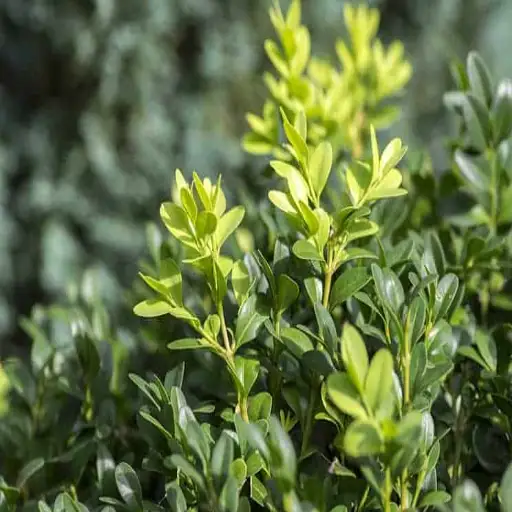
Plants That Particularly Like Epsom Salt Treatments
YYes, particular plants respond very well when treated with Epsom salt because of their special nutrient needs, particularly those of magnesium and sulfur. For example, Epsom salt can greatly benefit the growth of tomatoes and pepper plants as well as rose shrubs. These plants seem to show marked improvements in growth, fruit yield, and flowering beauty.
- Tomatoes and Peppers: Need higher magnesium levels during the fruit set period. To help achieve optimal yields and avoid deficiencies such as blossom end rot, a sodium Epsom 1 tablespoon per gallon of water for foliar applications of every two-week intervals helps.
- Roses: Magnesium is an important nutritionally essential part of chlorophyll in rose flowers, helping in color intensification. To meet the blossom-filling needs of the plant, monthly application of Epsom salt helps in enhancing bloom production applied at one-half cup to the bottom part of the rose bushes.
- General Use: Plants with low magnesium level can receive soil application of Epsom salt on the deficiency zone of 1-2 tablespoons per height foot of the magnesium deficient plant with no chance of overdose. Too much Epsom salt can be avoided with correct zone placement.
This guarantees that the targeted elements will help the plant while minimizing chances of over-fertilizing and harming soil chemistry in the process.
Plants That May Be Sensitive to Magnesium Sulfate
Even though Epsom salt (magnesium sulfate) is beneficial and rich in magnesium, some species of plants take it quite badly, especially when in excess. A few plants that can generally be harmful in high concentrations of magnesium include:
- Plants Which Prefer Acids: Blueberry, azaleas, or even rhododendron species tend to adapt to lower pH conditions. They can negatively respond to magnesium sulfate due to its soil raising capability over time.
- Plants With Lesser Requirement Of Magnesium: Some cacti or succulent plants that thrive in barren lands may not need aan dditional supply of magnesium, and changing the balance may cause harm to them.
- Plants Sensitive To Salts: Beans and strawberries have shown reduced growth or runted leaf growth, which makes them sensitive to sulfate ions. Due to their sensitivity to magnesium sulfate, they do not respond well to its application.
When it comes down to Epsom salt, understanding the planting type, soil condition, and the suggested application rates remains crucial when trying to avoid negative effects. Conducting soil tests to figure out the current magnesium and pH concentrations is strongly recommended to ensure the plants, soil health and chemistry are at their optimal.
Reference sources
Frequently Asked Questions (FAQs)
Q: How often should I use epsom salt for plants in my garden?
A: For general maintenance, apply epsom salt for plants every 4-6 weeks during the growing season. A good rule of thumb is to dissolve two tablespoons of epsom salt in one gallon of water and use this solution to water your plants every two weeks. For peppers and tomatoes, which particularly benefit from magnesium sulfate, you can apply it when planting by adding one tablespoon to the planting hole, then following up with a foliar spray monthly. Remember that while epsom salt is beneficial, overuse can disrupt your soil’s pH and nutrient balance, so moderation is key for any gardener.
Q: Can epsom salt prevent blossom end rot in tomatoes?
A: Epsom salt can help prevent blossom end rot in tomatoes, but it’s not a complete solution. Blossom end rot is primarily caused by calcium deficiency, while epsom salt provides magnesium and sulfur. However, these minerals can improve calcium uptake in tomato plants. When planting, put a handful of epsom salts in the hole to promote stronger root development. For established plants showing signs of rot, dissolve one cup of epsom salt in 5 gallons of water and apply to the soil around your tomatoes. This helps plants absorb available calcium more efficiently. For best results, combine epsom salt treatments with proper watering practices and calcium supplementation.
Q: What are the main benefits of epsom salt for peppers and tomatoes?
A: Epsom salt offers several key benefits for peppers and tomatoes. First, it provides magnesium, which is essential for chlorophyll production, helping these plants develop lush, green foliage. Second, it enhances nutrient absorption, allowing tomato plants to take up more nutrients from the garden soil. Third, it strengthens cell walls, making plants more disease-resistant. For peppers and tomatoes specifically, adding one tablespoon of epsom salt to the planting hole can stimulate stronger root development, while regular foliar applications (one tablespoon per gallon of water every two weeks) can increase fruit production and improve flavor. Many gardeners report that epsom salt application results in higher yields and reduces common issues like yellowing leaves in these popular garden crops.
Q: How do I use epsom salt for plants with yellowing leaves?
A: To use epsom salt for plants with yellowing leaves, first confirm that magnesium deficiency is the cause—look for yellowing between leaf veins while veins remain green, starting with older leaves. If this matches your symptoms, prepare a foliar spray by dissolving one tablespoon of epsom salt in one gallon of water. Spray the solution directly on the leaves until they’re thoroughly moistened, preferably in the morning to allow leaves to dry before evening. For soil application, dissolve two tablespoons of epsom salt in one gallon of water and apply around the plant’s base. Treat affected plants every two weeks until improvement is visible. This treatment is particularly effective for tomato plants, roses, and other magnesium-loving plants. Remember that not all yellowing is due to magnesium deficiency, so proper diagnosis is essential for any good gardener.
Q: Does adding epsom salt to a soil mix improve seed germination?
A: Epsom salt can help improve seed germination when used correctly in your soil mix. Adding a small amount of epsom salt (about 1 tablespoon per gallon of soil) provides magnesium and sulfur that can strengthen cell walls and enhance chlorophyll production as seeds sprout. This is particularly beneficial for magnesium-loving plants. The process is rather easy, so Epson salt is becoming increasingly popular among gardeners. For seeds that typically have tough outer coatings, Epson salt will help get past the shell more efficiently, resulting in faster germination rates and stronger seedlings. However, moderation is key—too much can inhibit germination by altering the soil’s pH. For best results, incorporate it into your starting mix rather than directly treating seeds, and ensure proper moisture levels to help plants absorb the nutrients effectively.
Q: How can I use epsom salt for plants to make them bloom more profusely?
A: To boost flowering with epsom salt, add one tablespoon to a gallon of water and apply to your flowering plants every 2-4 weeks during the blooming season. For established plants like roses and hydrangeas, sprinkle 1/2 cup of epsom salt around the base of the plant in early spring and again after the first bloom cycle. The magnesium in epsom salt helps plants produce more flowers by strengthening their ability to absorb nutrients and produce chlorophyll. For container plants, dissolve one teaspoon of epsom salt per gallon of water for monthly applications. Flowering shrubs particularly benefit from this treatment, with many gardeners reporting more vibrant colors and abundant blooms. Remember that while epsom salt is good for plants that need magnesium, it works best as part of a comprehensive feeding program rather than as a standalone treatment.
Q: Is epsom salt good for all types of plants or just specific ones?
A: Epsom salt is not universally beneficial for all plants. It’s particularly good for plants that are heavy magnesium feeders, including tomato plants, peppers, roses, potatoes, and leafy greens. Acid-loving plants like azaleas, rhododendrons, and blueberries also respond well to occasional epsom salt treatments. However, many native plants and desert plants have adapted to low-magnesium soils and may not benefit from additional supplementation. Before applying epsom salt, it’s wise for any gardener to test their soil to determine if there’s a magnesium deficiency. Using epsom salt unnecessarily can disrupt your soil’s pH and nutrient balance. For plants that do benefit, the typical application is one tablespoon per gallon of water applied monthly, or you can put a handful of epsom salts in the hole when planting. Always follow specific guidelines for your plant varieties rather than applying them universally throughout your garden.
Q: How can epsom salt help with transplant shock when establishing new plants?
A: Epsom salt can significantly reduce transplant shock by providing magnesium that helps strengthen cell walls and supports root development when establishing new plants. When transplanting, add one tablespoon of epsom salt to the planting hole and mix it gently with the garden soil. This helps the new plants absorb water more efficiently and adapt to their new environment. After planting, water with an epsom salt solution (one tablespoon per gallon) weekly for the first month. The magnesium and sulfur in epsom salt stimulate chlorophyll production, enabling plants to generate energy even while recovering from the stress of transplanting. This technique is especially beneficial for magnesium-loving plants like tomatoes, peppers, and roses. Many experienced gardeners put epsom salts in the hole before setting new plants to give them a stronger start and minimize the recovery period.

